140 Marquis Street – Higher education for African American students on the antebellum DeGraffenreid estate.
City Directories and History: This institute grew out of an 1866 school for freedman created to help educate young persons in the Chester and York County communities. It became Brainerd Institute in 1868 when the Board of Missions of the Presbyterian Church in New York appointed Rev. Samuel Loomis to help establish churches and schools among blacks near Chester. At first an elementary school, Brainard grew to ten grades by 1913 and was a four-year high school by the 1930s. Renamed Brainerd Junior College about 1935, it emphasized teacher training until it closed in 1939. Kulmer Hall is the only remaining building on the site. In the late 1990s a local group generated national interest in preserving the school. Actress Phylicia Rashad and her sister, dancer Debbie Allen answered the call for support. Rashad purchased the property in honor of her mother, Vivian Ayers Allen, who was a 1939 graduate of the institution. Both Rashad and Allen continue to assist programming and fundraising for the site.
The Yorkville Enquirer on July 5, 1877 reported – “Rev. Loomis spoke at the courthouse on Saturday to the trustees of the public schools. He is a northern gentleman who has been a resident of Chester for several years and is in charge of an institution founded by a wealthy Presbyterian lady for the education of colored children. Rev. Loomis is an excellent citizen and highly esteemed.”
The Yorkville Enquirer reported on July 8, 1880 – “The closing exercises of the Brainard Institute with Rev. S. Loomis as Principal had a large crowd, both white and colored.”
The Yorkville Enquirer reported on Feb. 21, 1884 – “A number of our citizens have contributed to the establishment of an industrial school to be attached to the Brainard Institute of which Mr. Rev. Loomis is principal. A workshop is to be built and the state will provide the necessary tools.”
On June 5, 1889 the Yorkville Enquirer reported – “The closing exercises of the Brainerd Institute spring term were held last week.”
The Yorkville Enquirer reported on May 24, 1893 – “The Loomis Hospital of Chester is seeking a commission from the Sec. of State for the purpose of establishing an institution for the indigent poor and the training of colored nurses. The capital stock is $1,000. The corporators are: H.A. Green, B.M. Spratt, G.B. White, George W. Gage, D.I. Walker, John L. Agurs, and J.R. Gore.”
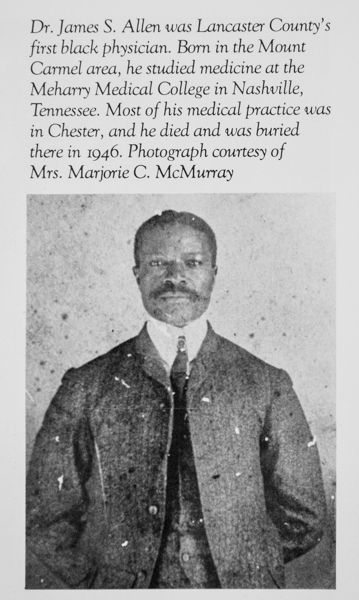
Courtesy of the Lancaster Co Pictorial History by Bishop and Pettus – 1984
Brainerd Institute is named in honor of David Brainerd, an early missionary to Indians living in Massachusetts and was located on what was once the Allen DeGraffenreid estate. (See the link to the DeGraffenreid family as listed below.) Allen Degraffenried was born: (September 18, 1764) in Lunenburg County, VA and married: Sarah Thomas (about 1797) in Chester County, SC – children: Allen Jr, Regina [T. G. Blewett], Cicely [J. McCaw], Tscharner Hobson, Thomas, and Pauline [J. B. Pickett] [J. B. Gilmer] died: (January 7, 1821) in Chester, Chester County, SC – buried: in DeGraffenried burying ground to the left of Highway 72 from Chester toward Carlisle about 9 miles out. As a youth, he went to Chester, Chester County, SC, with his brother Christopher (Kit) and a negro slave. (DeGraffenreid Family History Site)
To visit the National Register site for Kumler Hall visit the link below, click on the Chester County map and locate the building on the list.
Informative link and pictures: National Register, Inequity In SC Schools, DeGraffenreid Family
Baron deGraffenriedt had left Switzerland in 1708, carrying his family to England. Using English Crown funds, he came to America in 1710 and established a new colony on the seacoast in North Carolina, which he named New Berne for his native home. He was awarded the title of ‘Landgrave of Carolina’ by the Crown, which meant he was entitled to four Baronies, or 48,000 acres, from any of the Lord Proprietors. He is also recorded as one of the few, if not the first, true Nobleman to come to America. The Baron was captured by an Indian raid……. Noble Christopher deGraffenried VI (he dropped the “t” from his name), while his father was being held captive by the Indians, sought safety in Charles Towne, South Carolina and on Feb. 22, 1714 he married, in Charles Towne, Lady Barbara Tempest Needham, daughter of Sir Arthur Needham of Hertfordshire, England. This couple first went to Philadelphia, then settled in Prince Edward County, Virginia, with a townhouse in Williamsburg. He died at his home on the James River in 1742 and Lady Barbara deGraffenried died in 1744. On November 28, 1722, their only child, Noble Anthony Tscharner deGraffenried, was born in Williamsburg, the first of the family born in America and the last true Nobleman of the American branch of the family.
Noble Anthony Tscharner deGraffenried had extensive land holdings throughout Virginia, but made his home in Lunenburg County. By the time of the American revolution, in which he served in the Virginia Continental Line, he had amassed a considerable fortune. He was married a total of four times, had sixteen children, fourteen of whom lived to maturity. In 1763 Tscharner deGraffenried married his third wife, Eliza (Allen) Embry, a widow of Lunenburg County. To them were born three children: Allen, born 9/18/1764, died 1/7/1821 and in 1775 he was sent to Chester County, S. C., along with his brother, Christopher (Kit). He died in 1794, leaving most of his children quite wealthy.
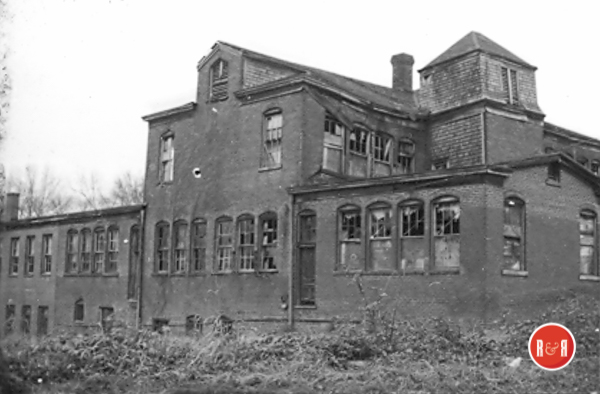
Image courtesy of the AFLLC / CRP Group – 1970s.
Returning to Allen and Kit deGraffenried, their father sent them to present Chester County, in 1775, then Craven County, shortly after the death of their mother. Practical logic would dictate they were sent to someone, as they were both very young. A likely candidate appears to be William Embry, possible older half-brother or uncle, who was established near the Sandy River in Western Chester County. This name is now spelled as Hembree in Chester. Upon reaching maturity, Allen deGraffenried married Sarah Thomas, a daughter of Colonel James and Susannah (Mabry) Thomas of Union County, S. C. Allen began acquiring land near the Sandy River, his plantation called “The Baron’s Estate”. In 1818, at the age of forty- one, Sarah deGraffenried died, leaving six children. In January of 1821, three slaves belonging to Allen, led by one named ‘Yellow John’, entered the home at night and murdered Allen for what cash was in the home. They were quickly caught, tried, sentenced and hung at Chester’s ‘Old Hanging Field’.
Allen and Sarah T. deGraffenried had six children, all born in Chester County, S. C.
1. Allen, Jr., who reached maturity, married and had at least one daughter, Sarah. She married Richard Kennedy of Chester, a son of Major John and Catherine (Evans) Kennedy, Major Kennedy having been known as the ‘Father of Chesterville’. They lived in the town of Chester in the home formerly occupied by the Female Academy. *** Mrs. Catherine Evans was the daughter of Richard Evans, an early pioneer living south of the town.
2. Regina, born 5/28/1799. Married Thomas Garton Blewett. He had moved to Chester from Blewett’s Falls, Miss. In 1833 he and Regina moved to the Blewett estate near Columbus, Miss., consisting of over three-thousand acres of farmland. A contemporaneous published account of the plantations and the wealth of this Blewett family is amazing. Their fields contained over two hundred thousand miles of row crops grown on the two main plantations, “Chester” and “York”. The account mentioned over two thousand slaves, the farms producing enough to feed all humans and beasts living there, with a surplus to feed another twenty thousand persons per year. After the War Between the States, Mr. Blewett paid an annual subscription rate of four hundred bales of cotton to the Confederate debt. The couple had twelve children. A granddaughter married Lt. General Stephen D. Lee of Charleston, S. C., the military defender of Vicksburg, Miss, during the war.
3. Cicely, born 7/10/1806. Married, 9/19/1822, John McCaw of Chester, a son of Major John McCaw of York County and of King’s Mountain fame during the Revolution. The McCaws moved to Kentucky in 1837, where they raised their thirteen children.4. Tscharner Hobson, born 1807, died 9/24/1860. having lived all his life in Chester County. Married, 4/20/1852, Mary Eaton Johnston, a native of Mass. In 1851, Miss Johnston had come to Chester County to accept the position of Governess in the home of Thomas deGraffenried. When her husband died, she was left with the two- thousand acre plantation, “Oakland”, situated on the Sandy River, over a hundred slaves, and two young children. During the War Between the States, her loyalty and politics remained with the North and she became a despised woman in Chester County. Her former employer and brother – in – law, Thomas deGraffenried, renounced her in a published letter in 1861, which earned her the colloquial title of “Damned Yankee”. Her life was threatened, she suffered verbal abuse, she lived in constant fear, but she remained on Oakland Plantation throughout the war. In 1869 she married Capt. Thomas P. Carlisle, a Chester County Confederate veteran, who died in 1893. She died in 1897 and is buried between her two husbands in Chester’s Evergreen Cemetery.
5. Thomas, born 4/14/1815, remained in Chester County throughout life. Married, 4/14/1840, Matilda Phoebe Chisolm, by whom he had five children. She died 5/10/1856 and he married, secondly, Belvedere Gott of North Carolina, who bore him five more children. He deeded the land for Evergreen Cemetery in Chester.
Little is known about the actual life of Christopher (Kit) deGraffenried, other than basic facts. He fought in the Battle of Cowpens during the Revolutionary War, where he received a chest wound. He established himself on the River near Neal’s Shoals in present Union County, and married, ca. 1795, Hannah Sartor, a daughter of John Peter and Elizabeth Sartor of Union County.
She was born in 1774 and died 1/12/1829. Hannah had two brothers who fought in the Revolution and they had married Rebecca and Sarah Hughes, daughters of Capt. Thomas Hughes of Chester County. Kit and Hannah deGraffenried had three children:
1. John, born 8/29/1796. Married Nancy Collier and had five children.
2. Mary, born ca. 1797. Married, ca. 1812, John V. Thomas in Charleston, S. C. and had eight children. A current Union County genealogist seems to think this John V. Thomas was of some kinship to Sarah Thomas, who had married Allen deGraffenried, and I tend to agree.
3. Trezevant, born 8/22/1799. Studied medicine in New York and returned to Union County to practice. Married, 3/25/1828, Rebecca Carlisle Hill, daughter of Moses and Savilla (Roden) Hill of Fairfield County, S. C. They had three children, one of whom was Emanuel Tscharner, who married Sue Seay of Alabama, the sister to the Governor of Alabama at the time. After the death of Rebecca, Trezevant married, 6/6/1851 in the Alabama Governor’s Mansion, his half first cousin, Lucretia (Calhoun) Towne, daughter of William and Catherine Jenner (deGraffenried) Calhoun. Sometime before the death of Rebecca, the entire family of Trezevant deGraffenried had migrated to Alabama. The many deGraffenreids now prominent in Alabama politics generally descend from Trezevant deGraffenried.
The deGraffenried name now appears to be extinct in the Chester County area, except for many Negro families living in Spartanburg, Union and Chester Counties, all descended from the former deGraffenried slaves. Some of these families could, I’m sure, easily trace their ancestry back to the Lunenburg plantation of Tscharner deGraffenried, for his will left an excellent record of property disposition. In conclusion, although the deGraffenried name is extinct in Chester County, there are many current citizens that have the deGraffenried Royal blood and should be proud of their illustrious ancestors. (Information researched and written by Robert J. Stevens – CDGHS Magazine)
“The DeGraffenried Family claims high descent from Christopher, Baron deGraffenried, one of the early Landgraves of Carolina. They intermarried with the Thomas and Blewett families of Chester, both of whom owned over a hundred slaves in 1830. In the Census of 1840, Thomas deGraffenreid with one hundred and nine slaves was, next to Colonel F. W. Davie with one hundred and thirty-eight, Chester’s largest planter. The DeGraffenried property in West Chester was referred to as The Baron’s Estate. The plantation burying-ground with elaborate marble memorials on the Fish Dam Road is now a pile of rubble. three stories with thirteen or fourteen rooms, burned in 1895.
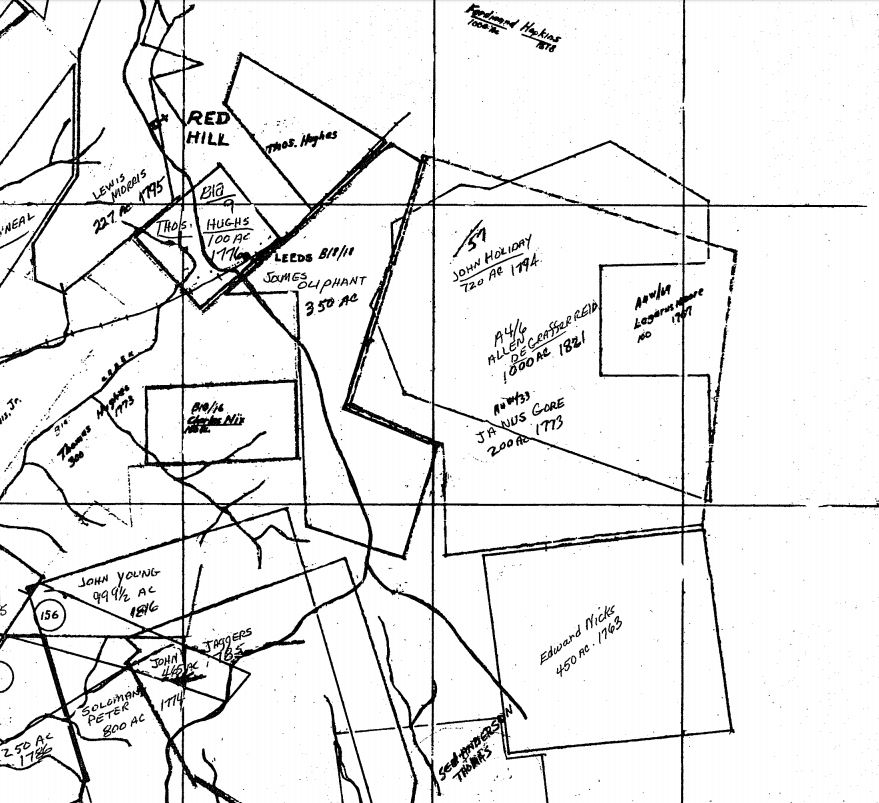
Allen deGraffenreid’s 1,000 acres in west Chester, S.C., near the Broad River. Land grant map (Neals Shoals (Union and Chester Co) #1) courtesy of the Upcountry Collection – 2019
The last of the great planters of the DeGraffenried name was Tschamer Hobson DeGraffenried, who owned one hundred and eight slaves in 1860. He married a well-educated governess from New York and lived on original DeGraffenried property on Sandy River. The Confederate Baptist, published in Columbia, February 24, 1864, announced his death, during the War: “Died at Oakland, his residence in Chester District, Tschamer H. DeGraffenried, in the 54th year of his age, leaving a widow and two children to deplore his death, followed by a summary of his domestic and Baptist virtues.
The Census of 1850 indicates that Chester District possessed quite a number of large plantation owners: Colonel Davie’s estate, Thomas deGraffenried, Charner Scaife, Thomas McLure, R. E. Kennedy, C. J. Jones, John G. Smith, Nancy Mobley, S. McAliley, and Dr. I. Mobley.”
Information from: Names in South Carolina by C.H. Neuffer, Published by the S.C. Dept. of English, USC
Stay Connected
Explore history, houses, and stories across S.C. Your membership provides you with updates on regional topics, information on historic research, preservation, and monthly feature articles. But remember R&R wants to hear from you and assist in preserving your own family genealogy and memorabilia.
Visit the Southern Queries – Forum to receive assistance in answering questions, discuss genealogy, and enjoy exploring preservation topics with other members. Also listed are several history and genealogical researchers for hire.
User comments welcome — post at the bottom of this page.
Please enjoy this structure and all those listed in Roots and Recall. But remember each is private property. So view them from a distance or from a public area such as the sidewalk or public road.
Do you have information to share and preserve? Family, school, church, or other older photos and stories are welcome. Send them digitally through the “Share Your Story” link, so they too might be posted on Roots and Recall.
Thanks!
User comments always welcome - please post at the bottom of this page.
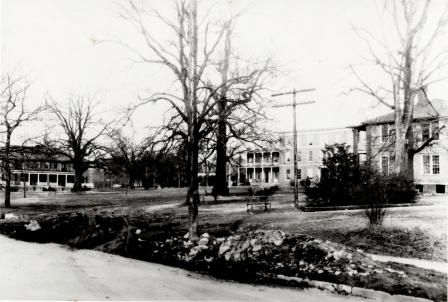
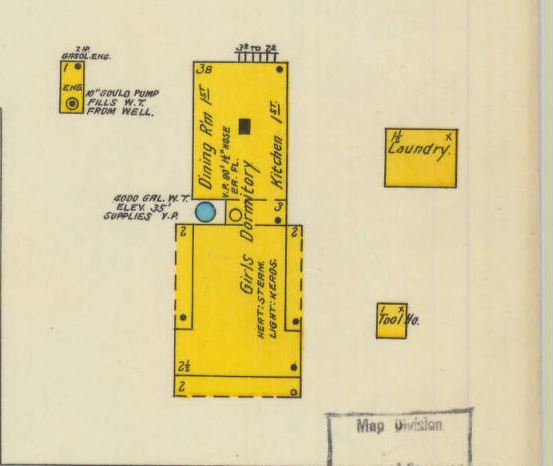
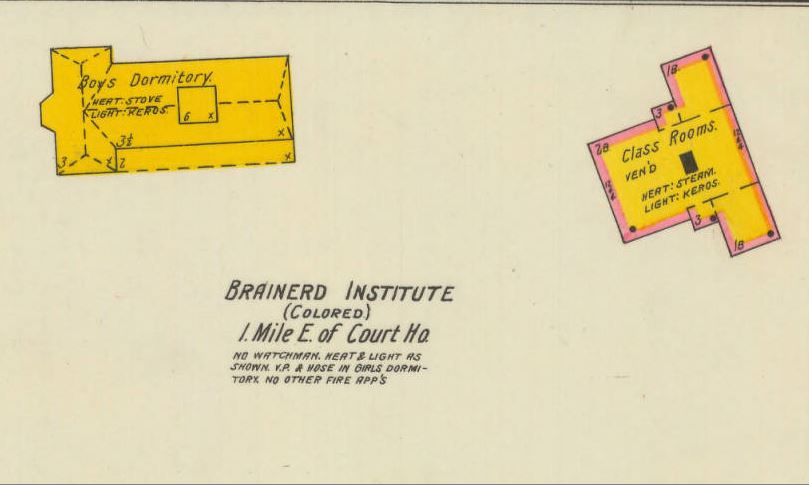 Image of Brainard Institute – Courtesy of the Chester Co Library
Image of Brainard Institute – Courtesy of the Chester Co Library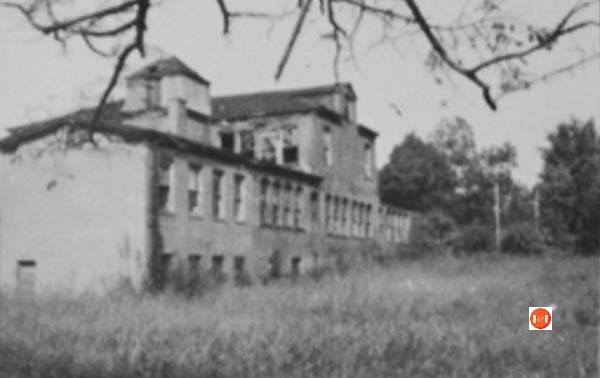
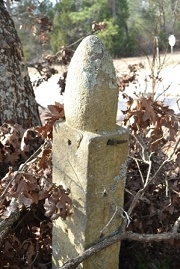
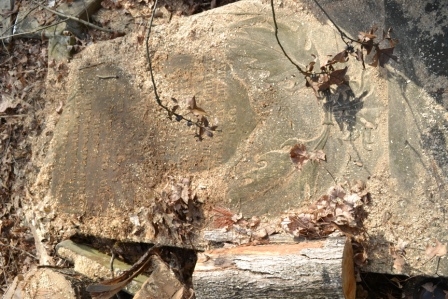
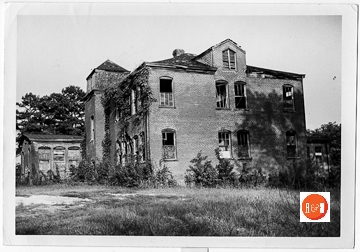
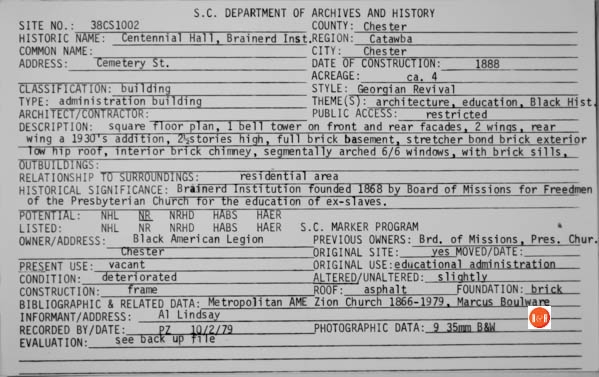
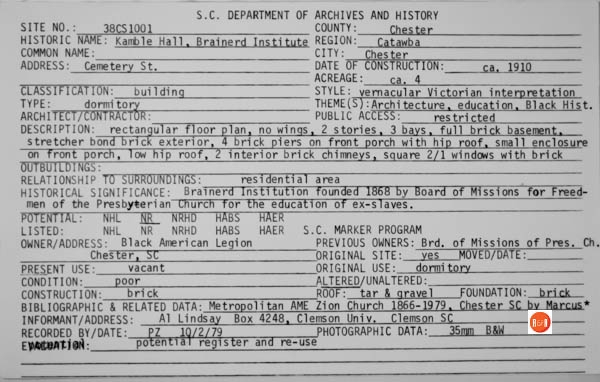
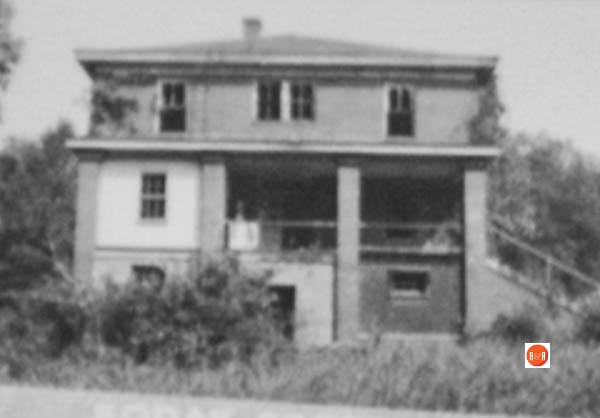
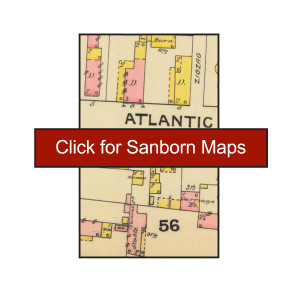





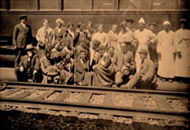
Share Your Comments & Feedback: